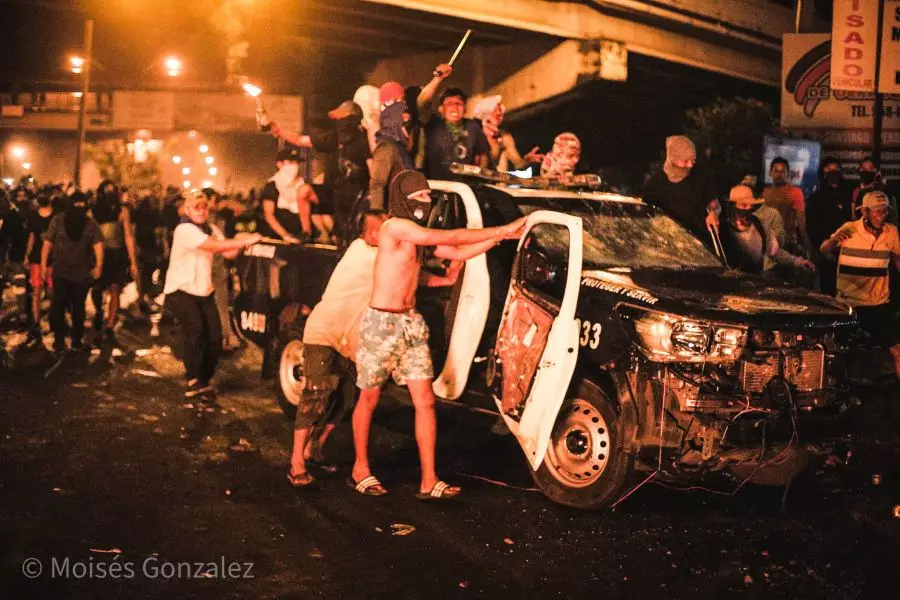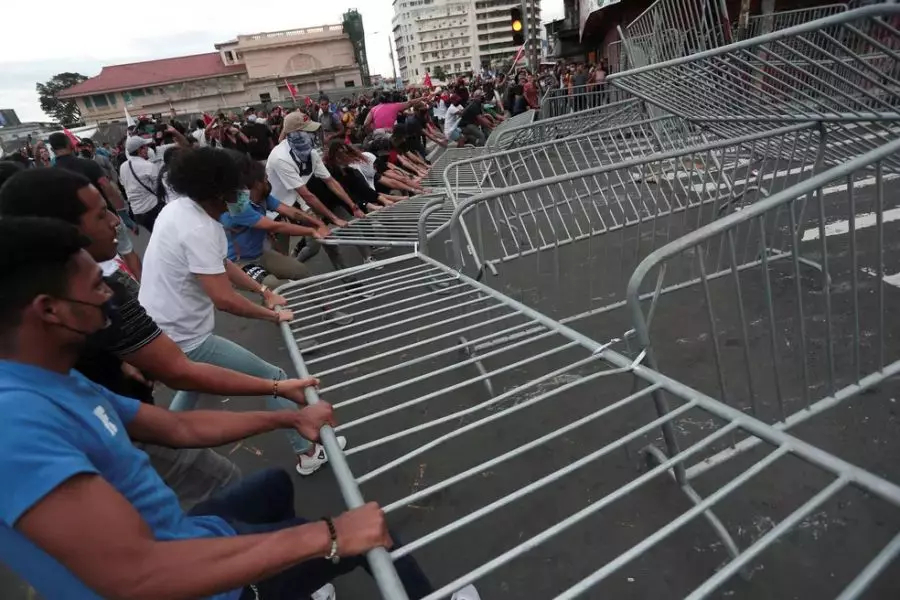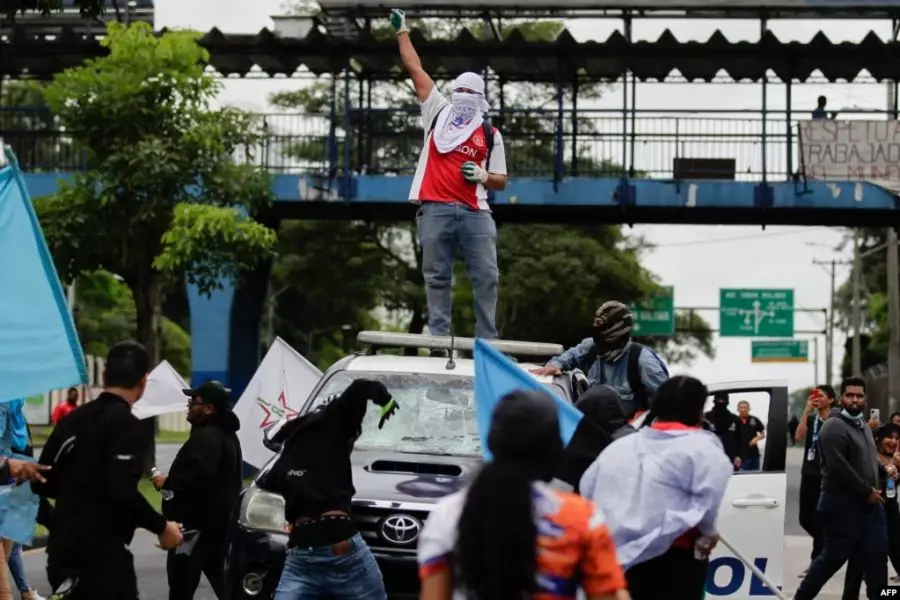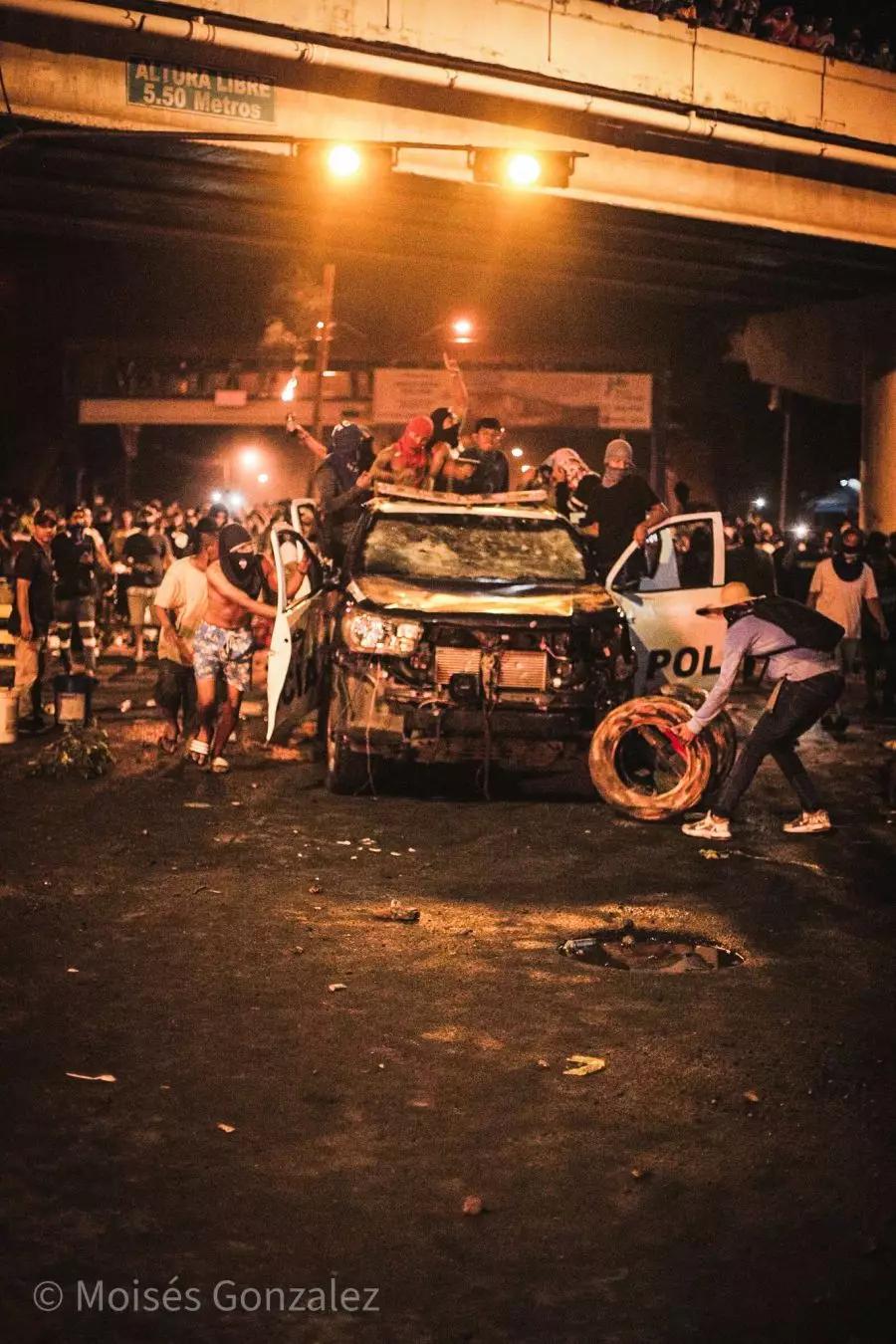We like to share an inofficial translation of an article by A Nova Democracia that was sent to us. In the original article you can find more videos.
Panama completes one month of popular rebellion

Demonstrators respond to police repression in Santiago de Veraguas.
At the beginning of July the largest popular rebellion in three decades began in Panama. The masses are protesting against the rising prices of fuel, food and medicine. During the rebellion, demonstrators blocked all the roads leading to the capital and blocked the Pan-American Highway, the main road that crosses the country and connects to Costa Rica. These are the largest protests in the country since 1989, when the people were fighting for the end of the military regime.
The masses are demanding that the government reduce the price of fuel to three dollars, as well as food and medicine. Several categories of workers are on strike, like the construction workers, who are demanding a pay rise, and the teachers who, apart from a pay rise, are demanding that the government pay their overdue salaries.

Teachers remove the bars that separated them from the National Congress. Photo: Reuters
The people also reject the corruption and theft by the different governments of the old Panamanian state and its reactionary politicians, who spend rivers of money stolen from the people through taxes. The current anti-people and sell-out president, Laurentino Cortizo, is a landowner cattle rancher, former congressman and former president of the National Assembly, as well as former minister of agricultural development during the government of Martín Torrijos. He is being denounced by the masses as a representative of the most rotten bureaucrats in the reactionary institutions of the old State. Various sectors of the people are demanding his immediate removal from the presidency.
The Panamanian people have shown their support for the protests. A driver who was stopped at one of the roadblocks said on July the 15th to the press monopoly Diario Gestión: "It doesn't bother me to be here. How would I get angry if those who are carrying out the blocking of the road are doing it for a cause both theirs and mine, of all Panamanians at a national level?"
The rich get richer, the poor poorer

Large march is held against rising prices in basic products. Photo: Reuters
The Panama Canal generates billions annually and in 2021 it broke its record for transporting tons. All this wealth generated in the national territory is not reverted into improving the living conditions of the masses. On the contrary: the country currently has 12% of the population at poverty level (with rural poverty being five times greater than urban poverty), 10% are unemployed and informal employment has increased more and more, reaching more than 48% of the total number of workers. In 2020 alone, there was a 17.9% drop in GDP.
In this context, the increase in fuel and other basic necessities further deepens the economic and social crisis: the price of fuel has increased by over 47% in the last six months, peaking at six dollars (R$32) per gallon (about three litres). In addition, inflation in the month of May reached 4.2%, reflected in the price of food and medicines. The country is ranked as the third most expensive to live in Latin America.
Workers maintain blockades while police repress with bullets
Various sectors of workers and the masses have maintained the blockades throughout the country. Workers and teachers, for example, in addition to the blockades, have carried out several strikes along the route of the protests. On July the 14th, 100% of the construction workers were on strike, and the teachers have not been teaching for three weeks.
In their vain attempts to demobilise the blockades, the Panamanian police, particularly their "anti-riot" squad, have attacked the people with tear gas bombs, pepper spray, beatings and arbitrary arrests. The unions also denounce that the police have used firearms to try to discourage the demonstrators. The masses have responded to the attacks, facing police truculence to guarantee their right to demonstrate.
On July the 19th, in the district of Santiago, province of Veraguas, the police violently repressed the local community, from children to the elderly, who were blocking the Pan American highway. Some 56 residents were beaten. The community responded by setting fire to two National Police vehicles and, confronting the repressors, injured seven police officers. More than 20 residents were detained.
Government proposes 'dialogue' after combative protests

Masses revolted against misery and police repression destroy police vehicle in Panama. Photo: AFP
Between July the 11th and the 13th, the demonstrations in Panama City were massive and combative. On those days, on several occasions, the masses removed the metal bars isolating the National Congress in an attempt to enter the place where some of the nation's parasites were. In addition, throughout the capital, barricades were formed to block the internal roads. Under attack, the masses resisted police repression. On 11/07, two policemen were injured after repressing the masses, one of whom was wounded with a bullet. In all, on these three days, almost a hundred people were arrested for protesting in the capital.
On 13/07, after the largest protests since the start of the demonstrations, the reactionary president was forced to give in. Cynically, he asked that all the sectors involved in the strike take part in a "dialogue table". A mere deception to try to demobilise the just Panamanian protest at a time when the demonstrations are gaining more and more support.
Unions accept the agreement and are forced to go back on it

Workers carry out a big demonstration in Panama. Photo: AP
At a "dialogue table" promoted by the reactionary and sell-out Panamanian government on July the 19th, the union centrals that called for the beginning of the strikes signed an "agreement" with the reactionary government to end the demonstrations that were already carried out spontaneously by all sectors of the masses.
The government's measures, to which the yellow unions agreed, included only a freeze on the price of gasoline at 3.95, a freeze (not a decrease) on the price of only 10 products in the basic food basket, the firing of 10% of the civil servants of the old state (any, not those in the upper echelons of the government), suspension of hiring more Congressional staff, and a "control" of only 50% on fuel expenses for government entities.
The masses, revolted by the agreement made for crumbs, decided that they would continue to demonstrate and rejected the unions for making the agreement without concern for the demands of the masses. In view of this, the unions had to go back on the agreement and state that they would continue with the demonstrations, as well as admit that they "had not consulted the rank and file".

Demonstrators respond to police repression in Santiago de Veraguas.
